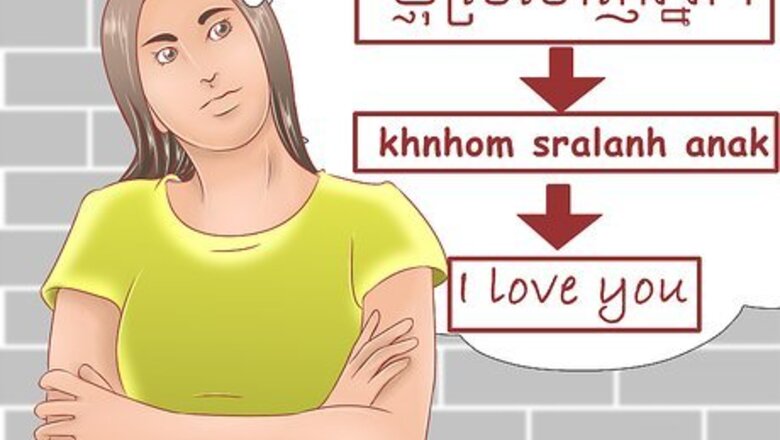
views
X
Research source
If you love someone who speaks Khmer, saying "I love you" in Khmer is a great way to show him or her that you are learning about the Khmer language and culture. To say "I love you" in Khmer, there are a few things you should understand, including Khmer phonetic pronunciation norms, grammatical rules that govern the phrase, and Khmer culture surrounding love and romance.
Learning the Words
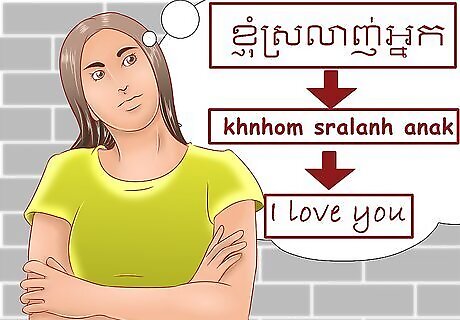
Learn the basic phrase. ខ្ញុំស្រលាញ់អ្នក is "I love you" written in Khmer. Its phonetic pronunciation is "khnhom sralanh anak," but remember, there is no standard way of rendering it phonetically, so you might see it written differently. Some native Khmer speakers render it "knhom srolanh nak." "Knhom" (also rendered "khnhom" or "kyom" or " is the word you use for "I" if you want it to be gender-neutral or generic. Pronounce it "ken-yooom." "Nak" is the word you use for "you" if you want it to be gender-neutral or generic. The "k" is very subtle (almost imperceptible): say it like "naHk"

Change Khmer phrasing based on gender. Depending on whether you are a male or female, and whether the person you are addressing is male or female, you should use different words for say the phrase "I love you." "Bong" is the word you use for "I" when you are a male referring to yourself or the word for "you" when you're speaking to a male lover. "Oun" is the word you use for "I" when you are a female referring to yourself or the word "you" when you are speaking to a female lover. These words will be necessary to say "I" and "you" in Khmer when you say the phrase "I love you."
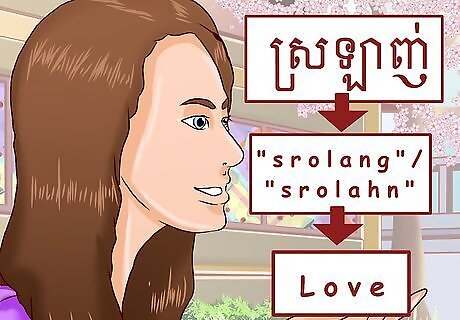
Learn to say "love" in Khmer. Love in Khmer is written ស្រឡាញ់. Regardless of whether you are male or female, or if the object of your affection is male or female, "love" is pronounced the same way. One common way to phonetically render the Khmer word for "love" is "srolang." Another way is "srolahn." As you say the "r," slightly roll it with your tongue; the "g" falls off the end and is almost imperceptible (which is why some renderings leave it off altogether). To some English speakers, the word "srolahn" is reminiscent of the German word "Fräulein," which means "Miss."
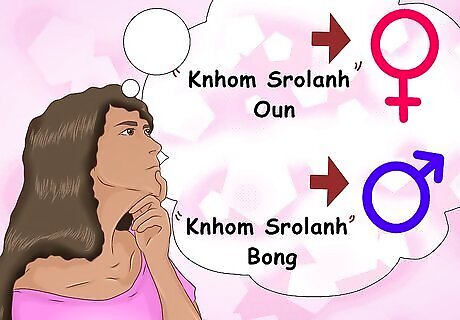
Put it all together. Now that you know the appropriate words for male and female genders, you can put these words together with "love" to say "I love you" to the object of your affection. The translation for "I love you" in Khmer is "Kyom srolang bong" which is if you say it to a male. (Kyom is the gender-neutral form of "I.") If you are a female addressing a male lover, say, "Oun srolang bong." If you say it to a female you will say "Kyom srolang oun." (Kyom is the gender-neutral form of "I.") If you are a male addressing a female lover, say, "Bong srolang oun."
Understanding Khmer Phonetics
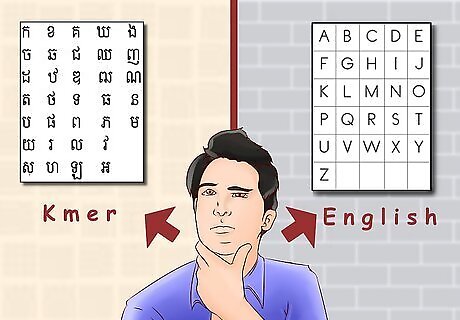
Know that the Khmer alphabet is very different from English. The Khmer language is ancient and borrows from many other Austroasiatic languages, most notably Thai and Lao. It is similar to other southeast Asian languages such as Vietnamese and Mon, and has a beautiful flowing script. If you know much about Asian language systems, you'll know that this means that Khmer, both in print and spoken aloud, is very different from the English alphabet system. The Khmer alphabet is alphasyllabic, meaning that each letter represents a syllable rather than one sound like in English. It is written from left to right, with no spaces between words in a given sentence. Khmer contains 33 consonant letters, 14 independent vowels, and 21 vowel diacritics (essentially an accent mark written above or below a letter that changes the way it is pronounced). None of these letters are similar to English, which can make it hard to learn for native English speakers.
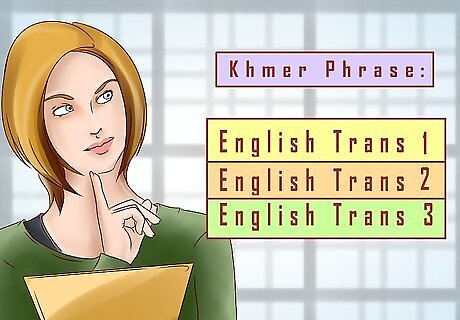
Know that there is no standard English phonetic system for Khmer. There are many systems that people use to "romanize" the Khmer language, that is, to render it in roman alphabetic characters like those used in the English language. This can make it hard to learn how to pronounce Khmer phrases, as you will find many variations of how Khmer words are written in phonetically in English.

Listen to Khmer to best learn its phonetic system. While you can learn the gist of the language by reading about it, the best way to learn to pronounce phrases in Khmer is to listen to native speakers. You can watch free Khmer lessons at https://www.youtube.com/watch?v=9Hp_Kj5e5PQ Check out Youtube video blogger Nathanial Dick's introductory videos at https://www.youtube.com/watch?v=Z0XPeQACWm4&themeRefresh=1. While he is not a native speaker, his videos are very helpful if you are a native English speaker just learning about Khmer.
Learning More About the Language

Watch Khmer speakers say "I love you." Check out these helpful Youtube videos to hear how native speakers pronounce this phrase. Youtube user Kime0 speaks and writes the phrase on his video at https://www.youtube.com/watch?v=TpLTFaf1BWI Youtube user SrokKhmer101 can help you perfect your pronunciation with his video at https://www.youtube.com/watch?v=4ljaX7ZhOA0
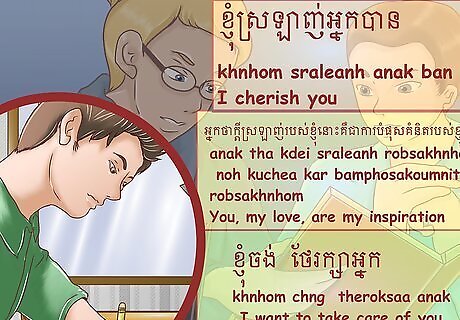
Don't stop with "I love you!" Khmer is a beautiful language and there are many ways you can learn more about it. Search the internet for free apps and online courses to help you learn more about the language and begin conversational Khmer. Consider calling your local university and hosting Cambodian students for language immersion. Many students who are learning English are eager to practice their skills and would love some cultural exchange!
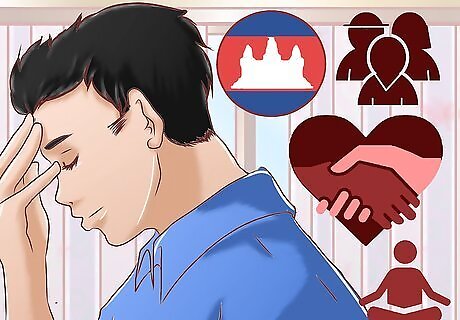
Learn about Cambodian culture. There are many resources for learning more about Cambodia, its people, culture, values, and lifestyle. Check out some of these great links for more information: You can learn about Cambodian history, religious beliefs, and cultural struggles online or from your local library. To learn about Cambodian greetings, interpersonal norms, marriage and kinship, and displays of respect and proper etiquette, check out https://ethnomed.org/culture/cambodian/cambodian-cultural-profile Search the internet for recipes for out amazing Khmer cuisine and prepare yourself for serious culinary pleasure!




















Comments
0 comment